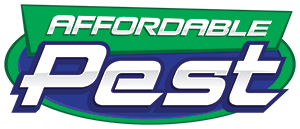Termite control is very different from other types of pest control in DC. And, if handled incorrectly, it can be a very expensive mistake. Termites cause more than a billion dollars of damage every year. If you think you have a termite control problem, there are 3 things that you need to know:
1. Termite control takes place in areas you can’t see
Most pest control in DC is done out in the open. So, if you see ants in your kitchen, your exterminator can simply spray their trail and get rid of them. Or, if you see cockroaches in your garage, you can lay down a few baits and eliminate them.
Termite control, however, is a totally different animal.
Ask any pest control expert, and he’ll tell you that termites are very rarely seen walking around in the open. Instead, termites like to live in dark spaces – like inside your walls, in your ceilings, or behind your baseboards – where they literally start to eat you out of house and home. To deal with them, your exterminator will have to treat them wherever they’re hiding.
2. You may see evidence of termites before you see the bugs themselves
Just because you don’t see a bug doesn’t mean you don’t have a termite control problem. It’s important to keep an eye out for signs of termites – like cracks in your wood, ceilings, and walls. Even a small crack could mean that you have hundreds of termites living behind it, eating away. If you have termites, you may also see little “mud tubes” in your concrete outside. For termites, these “tubes” are like an expressway – connecting them to their food source underground. These tubes can also make it possible for termites to invade structures that are several stories above ground.
3. Good termite control means prevention
A good expert in pest control in DC won’t just tell you how to get rid of termites; he’ll also tell you how to prevent them from setting up shop in the first place. An exterminator well-versed in termites will tell you to do things like keeping wooden mulch and firewood away from your home, removing any wooden trellises from the sides of your home, and trimming your bushes and trees before they overgrow and provide a “safe haven” for pests. They may also tell you to seal any cracks you see around your home so that termites don’t have a way inside.
